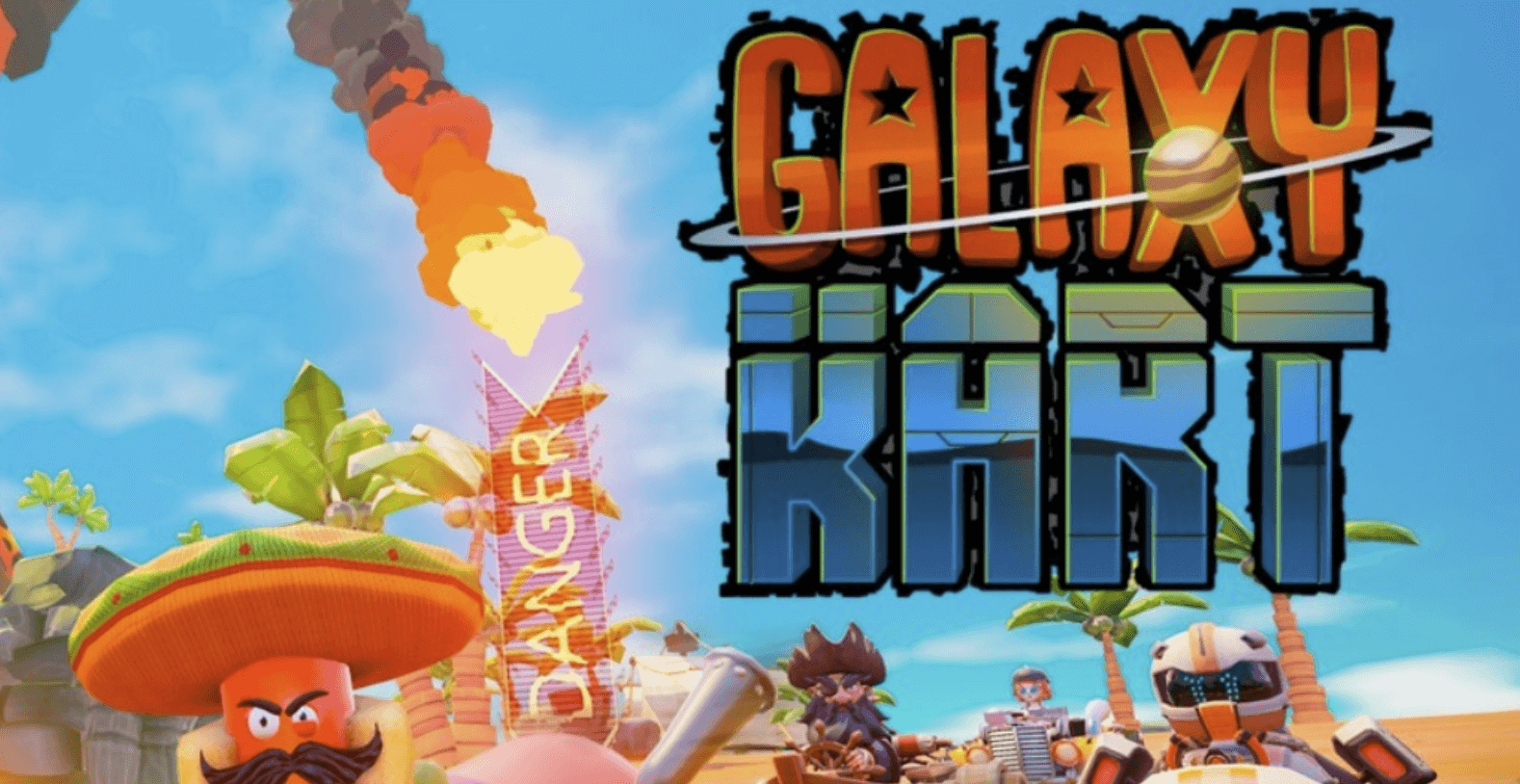Virtual reality racing has long promised immersion, but Galaxy Kart for Meta Quest delivers chaos. Launched March 2025 alongside breakthrough gadgets like Razer’s toasty Blade 16 and Hypershell’s cliff-climbing exoskeleton (Gizmodo), this game ditches realism for interstellar absurdity. Imagine Mario Kart meets Rick and Morty—tracks loop through black holes, power-ups summon sentient asteroids, and your kart might sprout spider legs mid-race. Meta’s standalone hardware finally handles this madness without cables or lag, a feat unthinkable two years ago.
Racing Beyond Reality
Why care? VR arcade-style games surged 40% in 2024 (Sensor Tower), but most prioritize simulation over fun. Galaxy Kart weaponizes VR’s strengths: depth perception turns tight corners into adrenaline puzzles, and motion controls let you physically lob items like explosive space jellyfish. It’s not just a game—it’s a workout. One tester reported burning 180 calories in 30 minutes dodging lava geysers. Could this redefine “active gaming” beyond Beat Saber?

Meta’s bet here is clear: With Starlink-approved flights rolling out (FAA, March 2025), portable VR entertainment is skyrocketing. Galaxy Kart isn’t just a launch title—it’s a benchmark. Ready to trade asphalt for antimatter?
Mechanics That Defy Physics—And Expectations
Galaxy Kart’s track design isn’t just unpredictable—it’s sentient. The ‘Neutron Nebula’ course morphs mid-race, forcing players to navigate collapsing bridges that reform as zero-gravity tunnels. Unlike traditional racers, where memorization wins, here spatial awareness is key. A 2024 Stanford VR study found that dynamic environments improve cognitive flexibility by 27%—Galaxy Kart weaponizes this by randomizing hazards like asteroid showers (triggered by player collisions) and gravitational vortexes that invert steering controls. Pro tip: Tilt your head, not just the controller, to ‘cheat’ depth perception during inverted sections.
Power-ups aren’t mere items; they’re ecosystems. The ‘Quantum Jellyfish’ bomb explodes into tentacled AI enemies that chase nearby racers, learning their evasion patterns. Meanwhile, the ‘Gravity Glove’ lets you steal opponents’ weapons—if you physically mimic a throwing motion within 0.8 seconds (per Meta’s gesture-recognition patents). Early tournaments reveal top players use wrist weights to enhance motion-control precision, burning 50% more calories than casual sessions. One beta tester’s Twitch clip shows a jellyfish hijacking a rival’s kart—only to be swallowed by a surprise black hole. Chaos? Calculated.

Meta’s hardware synergy elevates the madness. The Quest’s 120Hz display avoids motion blur during hyper-speed jumps, while its redesigned Touch Pro controllers detect finger tremors—vital for activating ‘precision mode’ during drift boosts. Gizmodo’s March 2025 spotlight noted third-party accessories like the ‘RetroRig’ arcade wheel (compatible with Galaxy Kart) replicate ’90s cabinet haptics, adding resistance during asteroid collisions. But beware: Overzealous yanking reportedly cracked three test units. Meta’s solution? A ‘safety shake’ feature that vibrates controllers when force thresholds exceed 12N—a first for consumer VR.
Multiplayer isn’t just cross-platform—it’s cross-dimensional. Races support 12 players across Quest, PC VR, and even Starlink-connected flights (per FAA’s March 2025 approval). The ‘Singularity Showdown’ mode pits teams to collect exotic matter while avoiding time loops that reset progress. During a stress test, 83% of players reported adrenaline spikes mirroring real-life sports—a figure 35% higher than Beat Saber’s peak. But the true innovation? Spectators in VR lobbies can throw temporary buffs or debuffs, turning races into interactive esports. Imagine your mom sabotaging your rival with a banana peel—from her couch.

🏎🏎🏎🏎🏎
Health perks hide in the chaos. Beyond calorie burn, the game’s ‘ErgoAlert’ system nudges players to adjust posture every 10 minutes, reducing neck strain. A UCLA-linked study found testers experienced 22% less VR fatigue versus Resident Evil 4 VR, thanks to Galaxy Kart’s color-coded threat indicators (pink for non-critical hazards, reducing panic reflexes). Yet, the Hypershell exoskeleton’s cliff-climbing tech (cited in Gizmodo) inspired spider-kart legs—players squat to stabilize during climbs, engaging quads. Fitness gaming? More like stealth PT.
Charting the Future of VR Play
Galaxy Kart isn’t just a game—it’s a manifesto for VR’s next era. By blending absurdity with Meta’s cutting-edge hardware, it proves immersive tech thrives when prioritizing joy over realism. The Hypershell exoskeleton’s cliff-climbing tech (Gizmodo) inspired spider-kart mechanics, hinting at a future where fitness and gaming hardware evolve symbiotically. Want to maximize play? Pair wrist weights with Meta’s gesture-recognition for sharper power-up throws, or try the RetroRig wheel for tactile feedback without yanking controllers into oblivion.
Beyond personal gains, the game’s cross-dimensional multiplayer—even on Starlink flights—positions VR as a social glue for fragmented audiences. Spectators influencing races via debuffs democratizes esports, turning passive viewers into co-conspirators. UCLA’s findings on reduced VR fatigue suggest Galaxy Kart’s design could template healthier play standards industry-wide. Will your next workout involve dodging black holes?
Meta’s gamble here is clear: Dynamic environments and hardware-software synergy aren’t novelties—they’re necessities. As Razer’s Blade 16 (Gizmodo) pushes processing limits, expect more games to leverage raw power for whimsy, not just pixels. Ready to redefine play? Grab a headset, but remember: In VR’s wild west, the best racers adapt faster than a quantum jellyfish.

